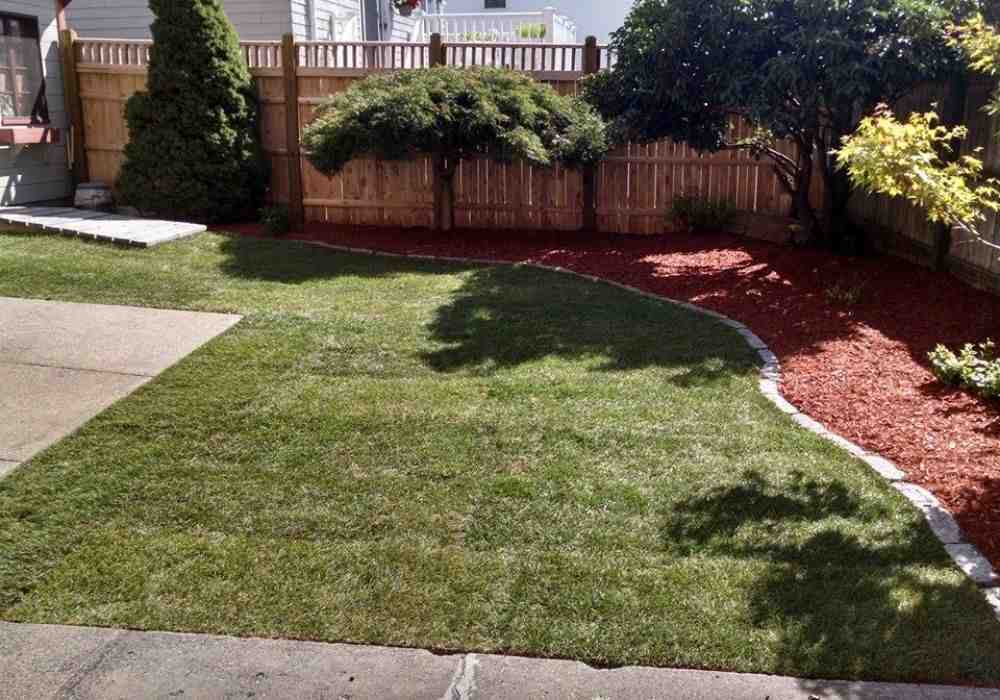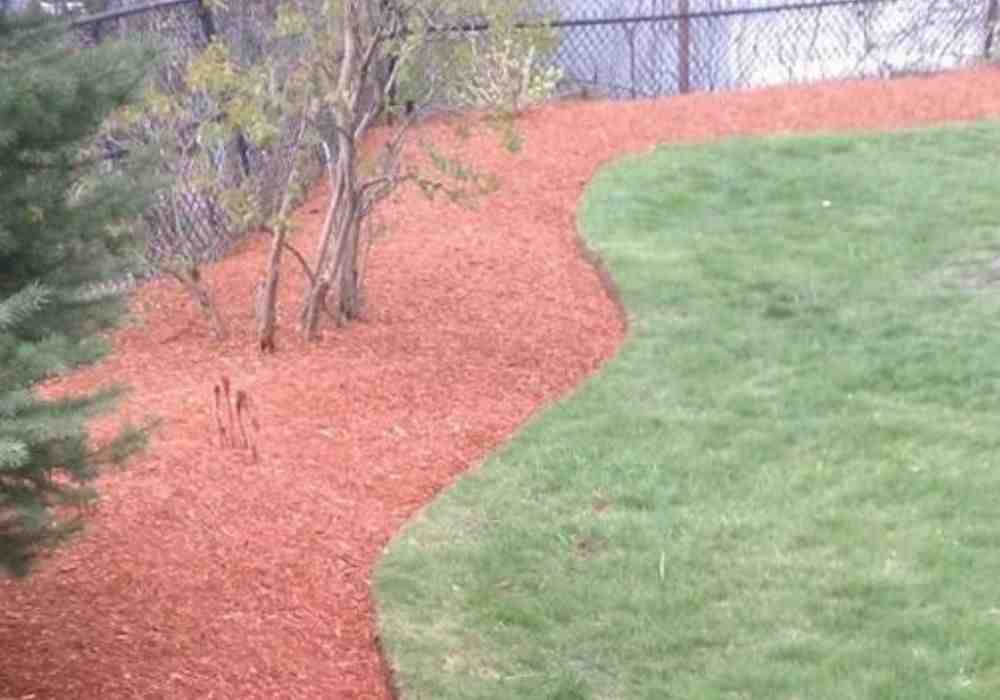Bark Landscaping: Top 5 Amazing Benefits in 2024
Introduction
Bark landscaping is a great way to enhance the beauty, functionality, and health of your garden. Bark mulch can enhance your garden’s look, help conserve moisture, and suppress the growth of weeds.
For a quick overview:
- Benefits: Moisture retention, weed suppression, aesthetic appeal.
- Types: Mini-nuggets, shredded bark, chunky bark.
- Selection Criteria: Local climate, plant variety, garden size.
Using bark in your garden provides numerous advantages, from enriching the soil to making maintenance easier. In the following sections, we will dive deeper into the different types of bark mulch available, how to choose the best type for your garden, and the correct way to apply it to maximize benefits.

Types of Landscaping Bark
When it comes to bark landscaping, choosing the right type of bark can make a significant difference in your garden’s health and appearance. Here, we’ll explore the three main types: Mini-Nuggets, Shredded, and Chunky Bark.
Mini-Nuggets
Mini-nuggets are small, rounded pieces of bark. They are typically made from pine or cedar and are favored for their neat appearance and ease of use.
Benefits:
– Aesthetic Appeal: Mini-nuggets provide a clean, uniform look, making them ideal for decorative purposes.
– Durability: These small pieces break down slower than finer mulches, providing long-term coverage.
– Ease of Application: Their size makes them easy to spread evenly across garden beds.
Case Study: In a Phoenix garden, a homeowner used mini-nuggets around their flower beds. The result? A visually appealing yard that required less frequent reapplication compared to finer mulches.
Shredded Bark
Shredded bark is made from the outer bark of trees, usually pine, cedar, or hardwood. It comes in various textures, from fine to coarse.
Benefits:
– Moisture Retention: Shredded bark is excellent at retaining moisture, keeping plant roots hydrated.
– Weed Suppression: Its dense coverage helps block sunlight, reducing weed growth.
– Nutrient Addition: As shredded bark decomposes, it adds valuable nutrients to the soil.
Example: A Phoenix-area landscaper used shredded bark around native plants. Over time, the organic matter enriched the soil, promoting healthier plant growth.
Chunky Bark
Chunky bark consists of larger, more irregular pieces. It is often sourced from pine or fir trees and is known for its rugged, natural look.
Benefits:
– Longevity: Due to its size, chunky bark takes longer to decompose, offering prolonged ground coverage.
– Erosion Control: The larger pieces are effective in preventing soil erosion, especially on slopes.
– Natural Appearance: It provides a rustic, natural look that blends well with desert landscapes.
Fact: In Anthem, a homeowner used chunky bark on a sloped garden bed. The bark effectively controlled erosion while maintaining a natural aesthetic.
Choosing the right type of bark for your garden depends on your specific needs and aesthetic preferences. In the next section, we’ll discuss the benefits of using bark in landscaping, including moisture retention, weed suppression, and aesthetic appeal.
Benefits of Using Bark in Landscaping
Moisture Retention
Bark acts as a protective blanket for your garden soil. It retains moisture by reducing evaporation, which is crucial during Arizona’s hot, dry summers. This helps keep your plants hydrated longer, reducing the need for frequent watering.
For example, a Phoenix resident who used GardenStraw Premium Mulch reported a water conservation of up to 50%. This mulch stabilizes soil moisture and temperature, ensuring that plants remain healthy even during heatwaves.
Weed Suppression
Bark is excellent at suppressing weeds. A thick layer of bark blocks sunlight from reaching weed seeds, preventing them from germinating and growing. This reduces the need for chemical herbicides and minimizes time spent weeding.
A customer in Scottsdale used GardenTime Garden Bark – Medium Nuggets around flower beds. They noticed a significant reduction in weed growth, making garden maintenance much easier.
Aesthetic Appeal
Bark not only serves practical purposes but also enhances the visual appeal of your garden. It comes in various colors, textures, and sizes, allowing you to customize the look of your landscape.
For instance, GardenTime Shredded Western Red Cedar Bark adds a rich, reddish hue to garden beds. Its fine texture and pleasant cedar aroma create a polished and inviting garden space.
Summary
Using bark in your landscaping offers multiple benefits: it retains moisture, suppresses weeds, and enhances aesthetic appeal. Whether you choose shredded, chunky, or mini-nuggets, bark can transform your garden into a beautiful and low-maintenance oasis.
Next, we’ll explore how to properly apply bark for optimal landscaping results.
How to Properly Apply Bark for Optimal Landscaping
Applying bark correctly is key to getting the most out of your bark landscaping. Follow these steps to ensure your garden benefits fully from your investment.
Layering Techniques
Proper layering is crucial for bark to be effective. Here’s a simple guide:
- Clear the Area: Remove weeds, debris, and any existing mulch.
- Lay Down Landscape Fabric: This helps prevent weeds from growing through. Cut holes for any existing plants.
- Apply the Bark: Spread the bark evenly over the fabric. Aim for a layer that is 2-3 inches thick. This depth is ideal for moisture retention and weed suppression.
Tip: Avoid piling bark directly against tree trunks or plant stems. This can cause rot and invite pests.
Coverage Area
Knowing how much bark you need can save you time and money. Here’s a quick formula to calculate the coverage area:
- Measure the Area: Determine the length and width of the space you want to cover.
- Calculate the Square Footage: Multiply length by width to get the total square footage.
- Determine Bark Volume: For a 3-inch layer, you need about 1 cubic yard of bark for every 100 square feet.
Example: If your garden bed is 10 feet by 10 feet (100 square feet), you’ll need 1 cubic yard of bark.
Avoiding Common Mistakes
Avoid these pitfalls to ensure your bark landscaping is effective:
- Too Much Bark: More than 3 inches can suffocate plants and prevent water from reaching roots.
- Too Little Bark: Less than 2 inches won’t effectively suppress weeds or retain moisture.
- Inconsistent Coverage: Uneven layers can lead to patchy growth and exposed soil.
Case Study: A California family replaced their lawn with bark mulch and native plants. By applying a consistent 3-inch layer, they reduced water usage and created a visually appealing landscape.
By following these guidelines, your bark landscaping will not only look great but also provide the functional benefits of moisture retention and weed suppression.
Next, we’ll answer some frequently asked questions about bark landscaping.
Frequently Asked Questions about Bark Landscaping
What kind of bark is best for landscaping?
Choosing the right bark for your garden depends on your needs and preferences. Mini pine bark and chunky pieces are popular options.
- Mini Pine Bark: These small pieces are great for flower beds and gardens. They break down faster, adding organic matter to the soil quickly. This makes them ideal for plants that need rich soil.
- Chunky Pieces: Larger chunks of bark are perfect for areas with heavy foot traffic. They last longer and don’t blow away easily. These are great for pathways and playgrounds.
Is bark better than mulch?
Both bark and mulch have their pros and cons, but here are some key points to consider:
- Durability: Bark usually lasts longer than mulch. Chunky bark pieces can stay intact for several years, while mulch may need to be replenished annually.
- Organic Breakdown: Mulch breaks down faster, adding nutrients to the soil more quickly. This is beneficial for gardens that need frequent soil enrichment.
What are the cons of bark mulch?
While bark mulch has many benefits, it’s not without its downsides:
- Chemical Dyes: Some bark mulches are dyed to achieve a specific color. These dyes can contain chemicals that may not be safe for all plants.
- Plastic Waste: Some commercially available bark mulches come in plastic bags, contributing to plastic waste. Always check the packaging and opt for eco-friendly options when possible.
By understanding these factors, you can make an informed decision about the best type of bark for your landscaping needs.
Conclusion
When it comes to bark landscaping, making sustainable choices is key. Opting for natural, undyed bark not only reduces chemical exposure but also minimizes plastic waste if purchased in bulk or eco-friendly packaging. This aligns with our commitment to creating beautiful, functional, and environmentally-friendly outdoor spaces.
At MAS Landscaping and Snow Removal, we prioritize sustainability in all our landscaping projects. Our team can help you select the best type of bark for your garden, ensuring it meets your aesthetic and practical needs while being kind to the environment. We recommend incorporating native plants and efficient water systems like drip irrigation to further enhance your garden’s sustainability.
By choosing MAS Landscaping and Snow Removal, you’re partnering with a team dedicated to quality and customer satisfaction. We offer a range of landscaping services, from routine maintenance to complex installations, ensuring your outdoor space remains stunning and functional year-round.
Ready to transform your garden with sustainable bark landscaping? Contact us today to get started!



